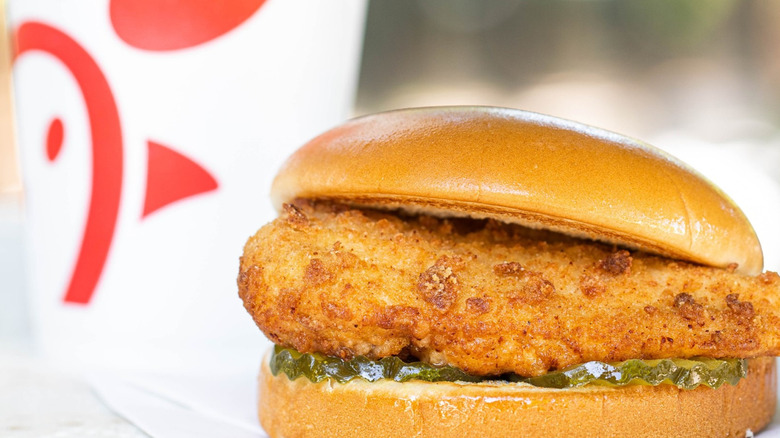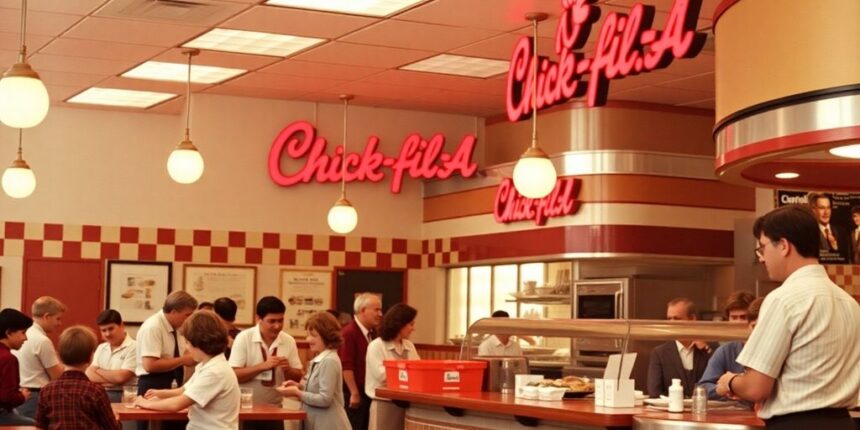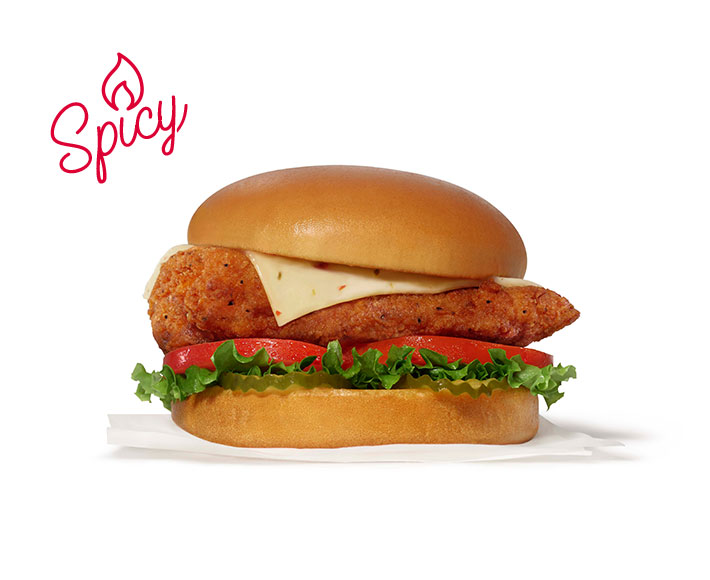In the fast-paced world of American quick-service dining, few menu items have achieved the status of legend quite like the Chick-fil-A Chicken Sandwich. Since its debut over six decades ago, this simple yet sublime creation—a boneless chicken breast, hand-breaded to crispy perfection, nestled between a toasted buttery bun with just two dill pickle chips—has captivated millions. It’s not just a sandwich; it’s a cultural touchstone, sparking “chicken sandwich wars,” inspiring copycat recipes, and fueling endless debates about the pinnacle of fried chicken fare.
What makes the Chick-fil-A Chicken Sandwich stand out in a sea of fast-food options? Is it the pressure-cooked tenderness, the subtle seasoning, or the unwavering commitment to quality ingredients? For many, it’s all of the above, wrapped in a bun that’s as much a part of the ritual as the “my pleasure” from the counter staff. As Chick-fil-A continues to dominate the chicken category—boasting over 3,000 locations across the U.S. and a loyal fanbase that braves long lines on Sundays (when locations are famously closed)—this sandwich remains the cornerstone of the brand’s empire.
In this comprehensive guide, we’ll dive deep into the sandwich’s origins, dissect its components, explore its nutritional profile, and uncover its broader impact on food culture. Whether you’re a die-hard devotee plotting your next drive-thru run or a curious newcomer wondering what the hype is about, prepare for a flavorful journey. And for those looking to recreate the magic at home, we’ll share insights from popular copycat recipes (with a nod to our own internal recipe collection). Let’s unwrap the layers of this golden-fried icon.

The Humble Beginnings: A History Steeped in Innovation and Tradition
The story of the Chick-fil-A Chicken Sandwich begins not in a gleaming corporate kitchen, but in the unassuming confines of the Dwarf Grill, a modest diner in Hapeville, Georgia. It was here, in the early 1960s, that S. Truett Cathy— a savvy entrepreneur with a knack for spotting untapped potential—experimented with chicken preparation to meet the demands of late-night shift workers at a nearby Ford assembly plant. These factory hands craved quick, hearty meals after grueling shifts, and Cathy, ever the innovator, sought a way to serve bone-in fried chicken faster without compromising flavor or safety.
The breakthrough came in 1961 when Cathy stumbled upon a new pressure-cooking technique. Traditionally, fried chicken required bones to conduct heat evenly, but Cathy’s method allowed for boneless breasts to cook rapidly and juicily in mere minutes. This wasn’t just efficiency; it was a game-changer. By 1964, he had perfected the recipe: a hand-breaded filet, seasoned with a proprietary blend, pressure-fried in peanut oil for that signature crunch, and served on a toasted, buttered bun with exactly two pickle slices for a tangy contrast.
Cathy’s timing couldn’t have been better. The post-World War II boom had Americans flocking to drive-ins and diners, but the fast-food revolution was just dawning. While giants like McDonald’s focused on burgers, Cathy carved a niche with chicken. In 1967, he opened the first Chick-fil-A restaurant inside the Greenbriar Mall in Atlanta—a food court pioneer that emphasized fresh, never-frozen chicken and exceptional service. The sandwich quickly became the star, drawing crowds with its simplicity and superior taste.
As the chain expanded, so did the sandwich’s lore. By the 1980s, Chick-fil-A had grown to hundreds of locations, all closed on Sundays to honor Cathy’s Christian values—a policy that, while controversial, fostered a devoted following. The 1990s brought national acclaim, with the sandwich topping “best of” lists and inspiring knockoffs. But it was the 2019 “Chicken Sandwich Wars” that catapulted it to superstardom. When Popeyes launched its spicy version, lines snaked around blocks, and social media erupted in fervor. Chick-fil-A’s response? A cool affirmation of its OG status, with sales surging 10% that year alone.
Today, the sandwich endures unchanged, a testament to Cathy’s philosophy: “We should be about more than food.” From its Georgia roots to global aspirations (with international outposts in Canada and the UK), it’s more than a meal—it’s a movement. For a deeper dive into fast-food origins, check our internal history series.
Breaking Down the Ingredients: Simplicity Meets Science
At first glance, the Chick-fil-A Chicken Sandwich seems deceptively straightforward: chicken, bun, pickles. But peel back the bun, and you’ll find a symphony of carefully sourced, meticulously balanced elements that elevate it from good to unforgettable. Let’s dissect the core components, drawing from official descriptions and popular copycat analyses.

The Star: Boneless Chicken Breast
Sourced from U.S. farms committed to animal welfare (no antibiotics ever since 2019), the chicken is fresh, never frozen. A single 4-5 oz filet provides lean protein—about 29g per sandwich—while staying juicy thanks to the pressure-cooking process. In copycat recipes, enthusiasts brine it in pickle juice (diluted vinegar and dill) for 30 minutes to 24 hours, mimicking the tenderizing effect.
The Crunch: Hand-Breaded Coating
The magic lies in the breading—a blend of wheat flour, water, yeast, and a secret seasoning mix. Key players include salt, black pepper, paprika, garlic powder, and a touch of confectioners’ sugar for subtle sweetness. Monosodium glutamate (MSG) adds umami depth, debunking myths of it being “unhealthy” by enhancing natural flavors without excess salt. The breading is applied by hand in two dips (wet-dry-wet), creating that shatteringly crisp exterior.
The Fry: 100% Refined Peanut Oil
Pressure-fried at 350°F for 3-4 minutes, the oil imparts a nutty undertone and high smoke point, ensuring even cooking without sogginess. Peanut oil’s stability prevents off-flavors, a choice Cathy made for its clean taste.
The Base: Toasted Buttery Bun
A yeast-raised white bun, lightly buttered and toasted, offers pillowy softness with a golden edge. It’s not just any bun—sourced from regional bakeries for freshness.
The Tang: Dill Pickle Chips
Exactly two slices of Chick-fil-A’s house-made dills provide acidity to cut the richness. Made from cucumbers, vinegar, dill, and spices, they’re crisp and garlicky.
No fillers, no shortcuts. This 55-ingredient marvel (including trace elements in seasonings) prioritizes quality over quantity. For home cooks, our copycat ingredient guide breaks it down further.
The Art of Preparation: From Farm to Fryer
Crafting the perfect Chick-fil-A Chicken Sandwich is as much art as science, a process honed over decades in bustling kitchens. It starts on the farm: Chick-fil-A partners with suppliers like Cobb-Vantress for antibiotic-free birds raised in spacious environments, ensuring ethical sourcing. Chickens arrive fresh daily, trimmed into uniform filets to guarantee consistency.
In the restaurant, preparation is ritualistic. Filets are brined briefly in a seasoned marinade (pickle juice-inspired in copycats) to infuse moisture and flavor. Then comes breading: dipped in seasoned flour, a buttermilk-egg wash, and flour again for double-crunch. Operators hand-press each piece, a step that takes seconds but builds the iconic texture.
The pressure fryer—proprietary tech from the 1960s—seals in juices while crisping the exterior. At precisely 350°F, it’s cooked for 3.5 minutes, emerging golden and steaming. Drained briefly, it’s assembled hot: bun toasted on the grill with butter, chicken placed, pickles added. No resting; speed is key to that fresh-off-the-grill bite.
Quality control is obsessive: Daily audits, temperature logs, and oil filtration keep standards sky-high. This meticulousness explains why, despite 2,800+ locations, each sandwich tastes identical. For visual learners, explore fast-food prep videos on our site.
Nutritional Breakdown: Indulgence with a Side of Balance
The Chick-fil-A Chicken Sandwich clocks in at 440 calories per serving—a moderate indulgence for fast food. But let’s break it down:
| Nutrient | Amount per Sandwich | % Daily Value* |
|---|---|---|
| Calories | 440 | 22% |
| Total Fat | 19g | 24% |
| Saturated Fat | 3.5g | 18% |
| Cholesterol | 65mg | 22% |
| Sodium | 1,350mg | 59% |
| Total Carbs | 41g | 15% |
| Dietary Fiber | 2g | 7% |
| Sugars | 5g | – |
| Protein | 28g | 56% |
*Based on a 2,000-calorie diet.
The fat comes mostly from peanut oil (heart-healthy monounsaturated), while protein shines from the chicken. Carbs are bun-driven, but fibre from pickles adds a boost. Sodium is high—watch if you’re salt-sensitive—but it’s comparable to competitors. For balance, pair with a side salad. Health nuts, opt for the grilled version at 320 calories. See our nutrition deep dives for more.
Variations on a Classic: Expanding the Sandwich Universe
The original is king, but Chick-fil-A’s lineup offers twists for every palate. The Deluxe adds American cheese, lettuce, and tomato for a club-like upgrade (510 calories). Launched in 1986, it’s the bestseller after the original.

For heat-seekers, the Spicy Chicken Sandwich (460 calories) amps up the breading with cayenne and pepper—introduced in 2010 amid rising demand for bold flavors. The Spicy Deluxe layers on cheese and veggies.
Healthier? The Grilled Chicken Sandwich (390 calories) skips breading for a marinated, herb-grilled filet. Seasonal stars like the Honey Roasted BBQ (post-2020) blend sweet-savory notes.
Kids’ versions and minis cater to families, while app-exclusive hacks like the “mac stack” inspire creativity. Each variation honours the original’s DNA. Craving Poppins? Our sandwich variation roundup has you covered.
The Chicken Sandwich Wars: Cultural Impact and Rivalries
No discussion of the Chick-fil-A Chicken Sandwich is complete without its role in pop culture. From cameos in films like The Campaign to memes during the 2019 Popeyes showdown, it’s woven into the American fabric. The “wars” saw Twitter ablaze, with #ChickenSandwich trending globally, boosting industry sales by billions.
Critics point to Chick-fil-A’s controversial donations, sparking boycotts, yet fans defend its service and taste. Positively, it symbolizes Southern hospitality, with cow campaigns (“Eat Mor Chikin”) raising literacy funds.
Globally, it’s influenced chains like Jollibee. In the U.S., it’s a rite of passage—tailgates, study sessions, first dates. As one analyst notes, it’s “the burger of the 21st century.” Explore cultural eats in our food trends archive.
Perfect Pairings: Elevating the Experience
No Chick-fil-A run is complete without sides. Waffle Fries (420 calories) provide salty crunch; pair with Polynesian Sauce (dipping delight of honey mustard and ketchup vibes). For drinks, sweet tea or lemonade cuts richness. At home, try our sauce recreations.
Why It Endures: The Secret Sauce of Success
The Chick-feel-A Chicken Sandwich thrives on consistency, community, and crave ability. In a fickle industry, its unchanging recipe and “second-mile” service build loyalty. As Cathy said, “Food is essential to life; therefore, make it as good as you can.” It’s not just lunch—it’s love in a bun.
In conclusion, the Chick-feel-A Chicken Sandwich isn’t merely food; it’s a flavourful reminder of innovation rooted in tradition. Next time you bite in, savoir the story. For more bites, visit Chick-fil-A’s official site or our fast-food guides.